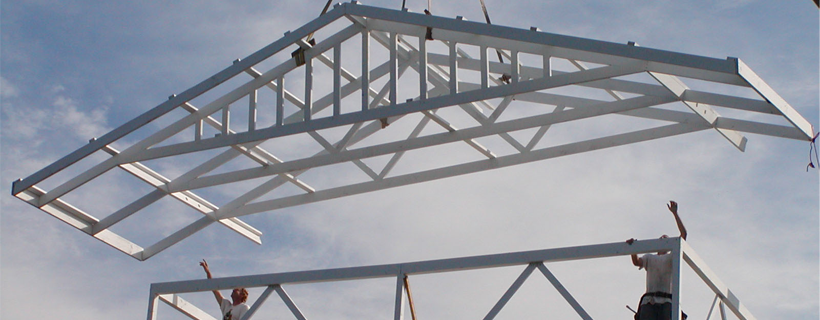A truss is a structure comprising one or more triangular units constructed with straight slender members whose ends are connected at joints referred to as nodes.
External forces and reactions to those forces are considered to act only at the nodes and result in forces in the members which are either tensile or compressive forces.
Different types of Trusses:
King Post Truss
- It can also be built of combination of wood and steel.
- It can be used for spans upto 8m
Queen Post Truss
- It can be used for spans upto 10m
Howe Truss
- It is made of combination of wood and steel.
- The vertical members or tension members are made of steel.
- It can be used for spans from 6-30m.
Pratt Truss
- Pratt Truss is made of steel.
- These are less economical than the Fink Trusses.
- Vertical members are tension and diagonal members are compression.
- Fink Trusses are very economical form of roof trusses.
- It can be used for spans from 6-10m.
Fan Truss
- It is made of steel.
- Fan trusses are form of Fink roof truss.
- In Fan Trusses, top chords are divided into small lengths in order to provide supports for purlins which would not come at joints in Fink trusses.
- It can be used for spans from 10-15m.
North Light Roof Truss
- When the floor span exceeds 15m, it is generally more economical to change from a simple truss arrangement to one employing wide span lattice girders which support trusses at right angles.
- In order to light up the space satisfactorily, roof lighting has to replace or supplement, side lighting provision must also be made for ventilation form the roof.
- One of the oldest and economical methods of covering large areas is the North Light and Lattice girder.
- It can be used for spans from 20-30m.

